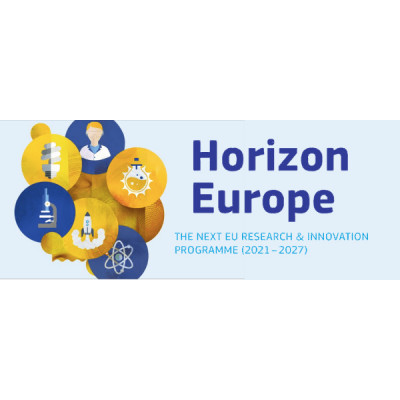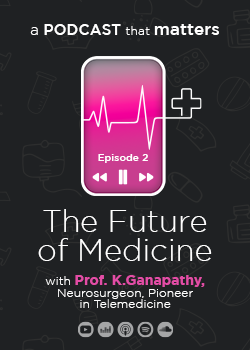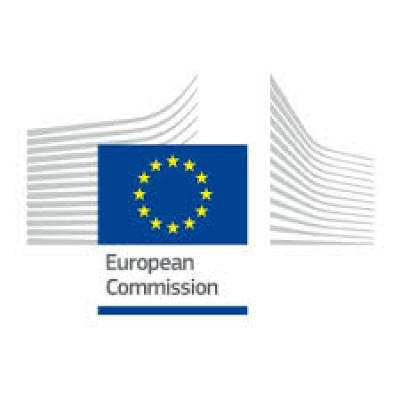
Development of Validated Test Methods and Requirements for Measuring Devices Intended for Measuring NG/H2 Mixtures
Details
Description
Call Updates
Aug 31, 2022 3:52:39 PM
CALL UPDATE: FLASH CALL INFO
An overview of the evaluation results (flash call info) is now available under the "Topic conditions and documents" section on the topic page.
Jun 1, 2022 9:41:15 AM
CALL UPDATE: PROPOSAL NUMBERS
Call HORIZON-JTI-CLEANH2-2022-1 has closed on the 31 May 2022 17:00:00 Brussels time.
79 proposals have been submitted.
The breakdown per topic is:
CROSS-CUTTING
- HORIZON-JTI-CLEANH2-2022 -05-04: 1 proposal
Evaluation results are expected to be communicated at the end of August 2022.
Mar 31, 2022 10:16:55 AM
The submission session is now available for: HORIZON-JTI-CLEANH2-2022-05-04(HORIZON-JU-RIA)
Development of validated test methods and requirements for measuring devices intended for measuring NG/H2 mixtures
TOPIC ID: HORIZON-JTI-CLEANH2-2022-05-04
Programme: Horizon Europe Framework Programme (HORIZON)
Call: HORIZON-JTI-CLEANH2-2022 (HORIZON-JTI-CLEANH2-2022-1)
Type of action: HORIZON-JU-RIA HORIZON JU Research and Innovation Actions
Type of MGA: HORIZON Action Grant Budget-Based [HORIZON-AG]
Deadline model: single-stage
Planned opening date: 31 March 2022
Deadline date: 31 May 2022 17:00:00 Brussels time
No validated test methods for measuring devices used in the distribution and transmission of hydrogen-enriched natural gas currently exist. Therefore, a scientific approach to identify the hydrogen limits in NG mixtures and tolerances for the currently implemented measuring devices in the existing networks such as, for example, but not limited to, gas meters, volume conversion devices, pressure transmitters and transducers, quality analysers, is not possible. To date, type approval for measuring devices is carried out based on dedicated EN standards while the test gases composition is commonly in accordance with EN 437:2018, Test gases - Test pressures - Appliance categories (which limits the percentage of hydrogen in the test gases to 23%) or EN ISO 6145 method for quality analyser. However, there is no confirmation that the requirements and the procedure of the existing standards allow a validated assessment of the performances of measuring devices in the case of different and unsteady hydrogen and NG mixtures (considering hydrogen concentration in the range between 0% to 100% vol.), and especially for pure hydrogen. Since larger quantities of hydrogen are expected to be injected into the European gas networks in the future, the existing situation represents a barrier to the decarbonisation of the existing NG networks.
Results of the work will facilitate the development of revisions and updates of the European standards concerning measuring devices which are installed on the gas transport and distribution infrastructure, subject to the requirements of the MID 2014/32/EU, OIML (OIML R137, OIML R140, etc.) and other relevant metrological rules.
Project results are expected to contribute to all the following expected outcomes:
- Identifying hydrogen content limits for currently installed measuring devices (e.g. gas meters, volume conversion devices, pressure transmitters and transducers, quality analysers) on the gas networks in terms of technical and metrological performances at different levels of hydrogen rate under dynamic network conditions;
- Supporting the manufacturing industry of gas measuring devices to have a clear vision of the problems connected to the presence of hydrogen blending with natural gas, helping them define their industrial plans concerning, for example, but not limited to, innovations aiming to ensure accurate measurement and billing;
- Supporting the natural gas TSOs (Transmission System Operators) and DSOs (Distribution System Operators) in the identification of the efforts required to convert existing natural gas networks to allow the safe transportation and distribution of different amounts of hydrogen and to ensure the most accurate billing to the final end-users;
- A boost in the entry into the market of hydrogen production technologies, thanks to the identification of potential barriers and technical solutions about the performances of measuring devices in order to accommodate variable volumes of hydrogen in the gas grid.
Project results are expected to contribute to all of the following objectives of the Clean Hydrogen JU SRIA (especially for Pillar 2, Hydrogen Storage and Distribution –Sub Pillar: Hydrogen in the Natural Gas Grid, and for Cross-cutting issues - Area: Safety, Pre-Normative Research and Regulations, Codes and Standards):
- Development of technologies and materials to explore and support the transportation of hydrogen via the natural gas grid;
- Enable through research and demonstration activities the transportation of hydrogen through the natural gas grid either by blending or via repurposing to 100% hydrogen;
- Support the development of RCS for hydrogen technologies and applications, with the focus on standards;
- Contribute to the SRIA KPIs for Safety, PNR & RCS, providing inputs for developing Standards, Technical Specifications, or Technical Reports at the international level (Targets: 2024 = 0.9 No/ project, 2030 = 1 No/ project).
Building on existing results from previous and ongoing projects such as, for example, NewGasMet[1] or Decarb[2], or the technical documents by EURAMET, experimental data from lab tests is necessary to validate technical and metrological requirements for measuring devices.
Proposals should develop validated test methods and requirements on existing measuring devices used in the gas distribution and transmission networks, that will result, among others, in the definition of hydrogen limits and tolerances for currently used measuring devices. The measuring devices to be considered should include, at least, but not limited to gas meters, volume conversion devices, pressure transmitters and transducers, and quality analysers.
Proposals should:
- Define the test condition range for the measuring devices that will be tested: temperature, pressure, total gas mixture flowrate, etc. based on the expected in-field conditions (transportation and/or distribution networks). Hydrogen percentages should cover the range between 0% to 100% vol;
- Select the characteristics of the tested measuring devices. Particularly, the project should define specific criteria for the selection of:
- Flow measuring devices that will be tested such as the type of gas meters and related size (maximum flowrate);
- Quality analysers, including but not limiting to gas chromatographs;
- Pressure transmitters and transducers;
- Any other measuring devices included in the project.
The requirements for accuracy and metrological traceability of reference measuring equipment should be identified to test the measuring devices addressed in the project;
- Define a coherent methodology and proper tests programs (i.e. protocols) with the aim of identifying hydrogen limits and tolerances for the measuring devices indicated in the project. Particularly, the tests should consider different hydrogen percentages in the Natural Gas mixture in both stationary (fixed hydrogen concentration) and dynamics (variable in time hydrogen concentration) conditions;
- Perform testing activities based on the protocols designed. Testing of measuring devices should be performed in at least two laboratories and/or test centres to ensure the requirements of the developed procedures;
- Evaluate the impacts on the measuring devices in order to provide indication for further technical requirement, for example, but not limited to, the evaluation of the impact of hydrogen on the current recognised algorithms used for calculation of compressibility factor Z (EN ISO 12213, part 1 to 3) and their suitability for metrological purposes;
- Provide recommendations and dissemination for updating and/or development of new standards at international level. Recommendations should be provided on the following points, at least to European and National gases and metrology associations:
- Development and validation of technical and metrological requirements:
In consideration of test results from the previous activities, development, validation and conformity assessment of technical and metrological requirements for measuring devices is needed to assure compliance of the currently used systems according to the requirements defined by standards or law for safety and process control in hydrogen technologies (as MID, OIML and other applicable metrological rules).
-
- Definition of limits and tolerances for measuring devices:
Experimental definition of hydrogen limits and tolerances for currently used measuring devices both in terms of components’ failure and degradation (i.e. safety) and metrological performances.
The project should identify and target the relevant standard(s) at the scope and activities should envisage links and synergies with current research projects concerning the measure of NG/H2 mixtures, such as those of the European Metrology Programme for Innovation and Research (EMPIR[3]) and European Partnership on Metrology of EURAMET. Collaboration with the activities of the Selected Research Topics SRT-v09 “Metrology for the hydrogen supply chain (Met4H2)” [4], which is expected to start in 2022, should also be foreseen. Proposals are encouraged to include a formal standardisation body within the consortium.
Proposals are expected to contribute towards the activities of Mission Innovation 2.0 - Clean Hydrogen Mission. Cooperation with entities from Clean Hydrogen Mission member countries, which are neither EU Member States nor Horizon Europe Associated countries, is encouraged (see section 2.2.6.8 International Cooperation).
Activities are expected to achieve TRL 4 by the end of the project. TRL of 4 is to be meant as readiness level of the test methods and requirements rather than technology
The conditions related to this topic are provided in the chapter 2.2.3.2 of the Clean Hydrogen JU 2022 Annual Work Plan and in the General Annexes to the Horizon Europe Work Programme 2021–2022 which apply mutatis mutandis.
[1]https://newgasmet.eu/
[2]https://www.euramet.org/research-innovation/search-research-projects/details/project/metrology-for-decarbonising-the-gas-grid/?tx_eurametctcp_project%5Baction%5D=show&tx_eurametctcp_project%5Bcontroller%5D=Project&L=0&cHash=68727f268894f4b2afd6c2cd62e69051
[3]https://www.euramet.org/research-innovation/research-empir/about-empir/
[4]https://msu.euramet.org/current_calls/greendeal_2021/index.html



